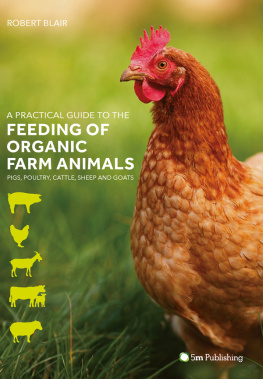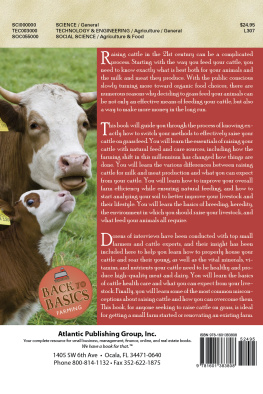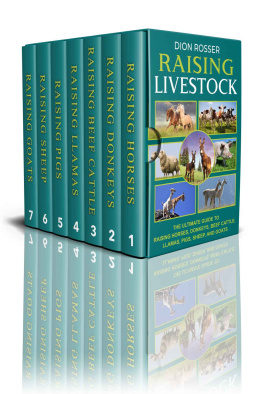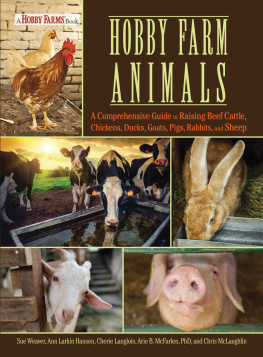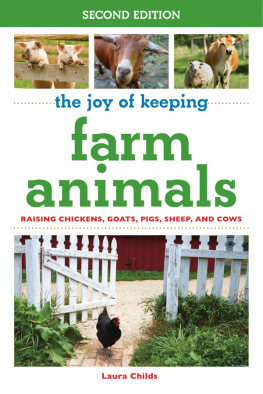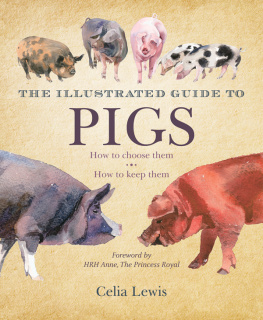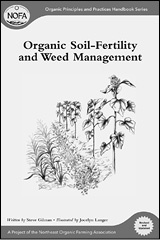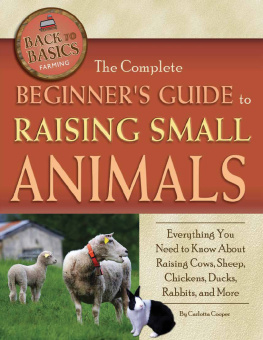First published 2016
Copyright Robert Blair 2016
All rights reserved. No part of this publication may be reproduced, stored in a retrieval system, or transmitted, in any form or by any means, electronic, mechanical, photocopying, recording or otherwise, without prior permission of the copyright holder.
Published by
5M Publishing Ltd,
Benchmark House,
8 Smithy Wood Drive,
Sheffield, S35 1QN, UK
Tel: +44 (0) 1234 81 81 80
www.5mpublishing.com
A Catalogue record for this book is available from the British Library
ISBN 978-1-910455-70-8
Book layout by Servis Filmsetting Ltd, Stockport, Cheshire
Printed by Replika Ltd, Pvt India
Photos by Robert Blair unless otherwise credited
Robert Blair
Faculty of Land and Food Systems
University of British Columbia
Vancouver, British Columbia
Canada
A Practical Guide to the Feeding of Organic Farm Animals
Chapter 4
Feeding Organic Poultry
As with pigs and other livestock, the standards of organic poultry farming are based on the principles of enhancement and utilization of the natural biological cycles in soils, crops and livestock. Accordingly, organic poultry production should maintain or improve the natural resources of the farm system, including soil and water quality.
Producers must keep poultry and manage their waste in a way that supports instinctive, natural living conditions of the birds, yet does not contribute to contamination of soil or water with excessive nutrients, heavy metals, or pathogenic organisms, and optimizes nutrient recycling. Living conditions must accommodate the health and natural behaviour of the birds, providing access to shade, shelter, exercise areas, fresh air, and direct sunlight suitable to their stage of production or environmental conditions, while complying with the other organic production regulations.
Organic poultry production differs from organic livestock production in that the parent stock is not required to be organic.
Feed, including pasture and forage, must be produced organically and health care treatments must fall within the range of accepted organic practices. Organic poultry health and performance should be optimized by application of the basic principles of husbandry, such as selection of appropriate breeds and strains, appropriate management practices and nutrition, and avoidance of overstocking. Rather than being designed to maximize performance, the feeding programmes should be designed to minimize metabolic and physiological disorders, hence the requirement for some forage in the diet. Grazing management should be designed to minimize pasture contamination with parasitic larvae. Housing conditions should be such that disease risk is minimized.
Nearly all synthetic animal drugs used to control parasites, prevent disease, promote growth or act as feed additives in amounts above those needed for adequate growth and health are prohibited in organic poultry production. Dietary supplements containing animal by-products such as meat meal are also prohibited. No hormones can be used, a requirement that is easy to apply in organic poultry production since hormone addition to feed has never been a commercial practice since diethyl stilboestrol (DES), which was used in implantable form in poultry many years ago, was banned in 1959.
Permitted feedstuffs for organic poultry production are listed in . These feed ingredients are considered to be necessary or essential in maintaining bird health, welfare and vitality; contribute to an appropriate diet fulfilling the physiological and behavioural needs of the species concerned; and do not contain genetically engineered/modified organisms and products thereof.
The specific criteria for feedstuffs and nutritional elements state that:
- a)Feedstuffs of plant origin from non-organic sources can only be used under specified conditions and provided they have been produced or prepared without the use of chemical solvents or chemical treatment;
- b)Feedstuffs of mineral origin, trace elements, vitamins, and provitamins can only be used if they are of natural origin. In case of a shortage of these substances, or in exceptional circumstances, chemically well-defined equivalent substances may be used;
- c)Feedstuffs of animal origin, with the exception of milk and milk products, fish, other marine animals and products derived therefrom, should generally not be used or, as permitted by national legislation.
- d)Synthetic nitrogen or non-protein nitrogen compounds shall not be used.
Specific criteria for additives and processing aids state that:
- a)Binders, anti-caking agents, emulsifiers, stabilizers, thickeners, surfactants, coagulants: only natural sources are allowed;
- b)Antioxidants: only natural sources are allowed;
- c)Preservatives: only natural acids are allowed;
- d)Colouring agents (including pigments), flavours and appetite stimulants: only natural sources are allowed;
- e)Probiotics, enzymes and certain microorganisms are allowed.
The regulations include the requirement for roughage and fresh/dried fodder or silage in the daily ration. All feed ingredients used must be certified as being produced, handled and processed in accordance with the standards specified by the certifying body.
The nutritional characteristics, average composition and (where possible) the recommended inclusion rates () of the feedstuffs that are considered most likely to be used in organic poultry diets are set out below. More detailed information is available in the book Nutrition and Feeding of Organic Poultry (Blair, 2008).
Due to a lack of data on feedstuffs that have been grown organically, the nutritional data refer mainly to feedstuffs which have been grown conventionally. Eventually a database of organic feedstuffs composition should be developed.
As with pigs, the primary sources of energy in poultry diets are cereal grains. One difference is that poultry have evolved as seed-eaters, so growing and mature birds have an ability to use whole grains whereas pigs require the grains to be processed by grinding or rolling, etc., before being included in feed mixtures.
In addition to the whole grains, the processing of cereals for the human market yields by-products that are important as feed ingredients.
Cereal grains are high in carbohydrate and they are generally palatable and well digested by poultry. Nutrient variability is usually higher in organic grains than in conventional grains, because of the fertilizer practices in organic grain production, but comparative data are inadequate at present.
Organic cereals tend to have a slightly lower protein content than conventionally grown cereals (Blair, 2012) and cereal byproducts tend to be more variable than the grains. As a result, it is advised that periodic checks on the nutrient content of feed mixtures be carried out, to ensure consistency and nutritional adequacy for poultry.
The fibre in grains is contained mainly in the hull (husk) and can be variable, depending on the growing and harvesting conditions. This can affect the starch content of the seed and, as a consequence, the energy value for poultry (). The hull is quite resistant to digestion by poultry and also has a lowering effect on the digestibility of nutrients.
The protein is low in important amino acids such as lysine and methionine, in relation to the birds requirement.
Grains also tend to be low in vitamins and minerals. Therefore, cereal grain-based diets must be supplemented with other ingredients to meet amino acid and micro-nutrient requirements.

